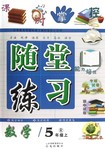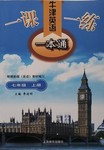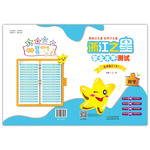题目内容
阅读理解。
Food is life; it gives us the nourishment (营养) we need to stay alive and be healthy. Usually, we eat
because we are hungry or need energy. Brian Wansink, a professor (教授) at the University of Illinois, says
we also eat certain (某种) foods because they make us feel good, and remind us of happy memories. Wansink
calls this kind of food comfort food. For some people, ice cream is a comfort food. For others, a bowl of
noodles makes them feel good.
How does a food became comfort food? Professor Wansink believes that we connect food with important
times, feelings, and people in our lives, 'When I was a child, my mother made a delicious soup; I loved it.
Now, I often eat this soup when I am tired or worried, and it helps me feel better,' says one of Wansink's
friends.
Do men and women choose different comfort foods? Wansink's research (研究) at the University of
Illinois says 'yes'. In his study, the favorite comfort for both men and women was ice cream. After this,
men usually preferred hot, delicious foods like soup or noodles. Women liked sweet things such as chocolate
and candies. Men and women like to eat comfort foods when they are happy, but women eat these foods
more when they are sad or worried.
because we are hungry or need energy. Brian Wansink, a professor (教授) at the University of Illinois, says
we also eat certain (某种) foods because they make us feel good, and remind us of happy memories. Wansink
calls this kind of food comfort food. For some people, ice cream is a comfort food. For others, a bowl of
noodles makes them feel good.
How does a food became comfort food? Professor Wansink believes that we connect food with important
times, feelings, and people in our lives, 'When I was a child, my mother made a delicious soup; I loved it.
Now, I often eat this soup when I am tired or worried, and it helps me feel better,' says one of Wansink's
friends.
Do men and women choose different comfort foods? Wansink's research (研究) at the University of
Illinois says 'yes'. In his study, the favorite comfort for both men and women was ice cream. After this,
men usually preferred hot, delicious foods like soup or noodles. Women liked sweet things such as chocolate
and candies. Men and women like to eat comfort foods when they are happy, but women eat these foods
more when they are sad or worried.
1. According to the passage, a kind of food that makes us feel good is called ________.
A. fast food
B. healthy food
C. Chinese food
D. comfort food
B. healthy food
C. Chinese food
D. comfort food
2. In Wansink's study, both men and women like to eat ________.
A. soup
B. ice cream
C. noodles
D. chocolates
B. ice cream
C. noodles
D. chocolates
3. The passage implies (暗示) that ________.
A. men probably eat more comfort foods than women
B. women usually eat comfort foods only when they are happy
C. men usually eat comfort foods when they are sad
D. women probably eat comfort foods more often than men
B. women usually eat comfort foods only when they are happy
C. men usually eat comfort foods when they are sad
D. women probably eat comfort foods more often than men
1-3 DBD

练习册系列答案
 开心蛙状元作业系列答案
开心蛙状元作业系列答案 课时掌控随堂练习系列答案
课时掌控随堂练习系列答案 一课一练一本通系列答案
一课一练一本通系列答案 浙江之星学业水平测试系列答案
浙江之星学业水平测试系列答案
相关题目
1. From the passage we know that fresh water ________.
[ ]
A. is needed in every country
B. can be found in many factories
C. can be used in many ways
D. is very important for factories.
B. can be found in many factories
C. can be used in many ways
D. is very important for factories.
2. What is the writer mainly talking about in the passage?
[ ]
A. Hot places and dry places.
B. The ways of making fresh water from sea water.
C. How to make good use fo the sun.
D. Water-making factories in different countries.
B. The ways of making fresh water from sea water.
C. How to make good use fo the sun.
D. Water-making factories in different countries.
3. The Symi factory __________ .
[ ]
A. is a fresh water-making factory
B. can be built everywhere
C. can make much fresh water at a time
D. does not need sunshine every day
B. can be built everywhere
C. can make much fresh water at a time
D. does not need sunshine every day
4. Which is the best way for small and hot places to get fresh water?
[ ]
A. Boiling or heating the sea water.
B. The way in hotter and drier places.
C. The Symi's way
D. Freezing the sea water in cold places.
B. The way in hotter and drier places.
C. The Symi's way
D. Freezing the sea water in cold places.
5. Why aren't there many factories like the Symi factory?
[ ]
A. Because mny new ways are tried to get fresh in small, hot places.
B. Because a lot of water can be made quickly by heating in any places.
C. Because people think that the best way is to get more fresh water with the least money.
D. Because the Symi's way does not work in dry places.
B. Because a lot of water can be made quickly by heating in any places.
C. Because people think that the best way is to get more fresh water with the least money.
D. Because the Symi's way does not work in dry places.
